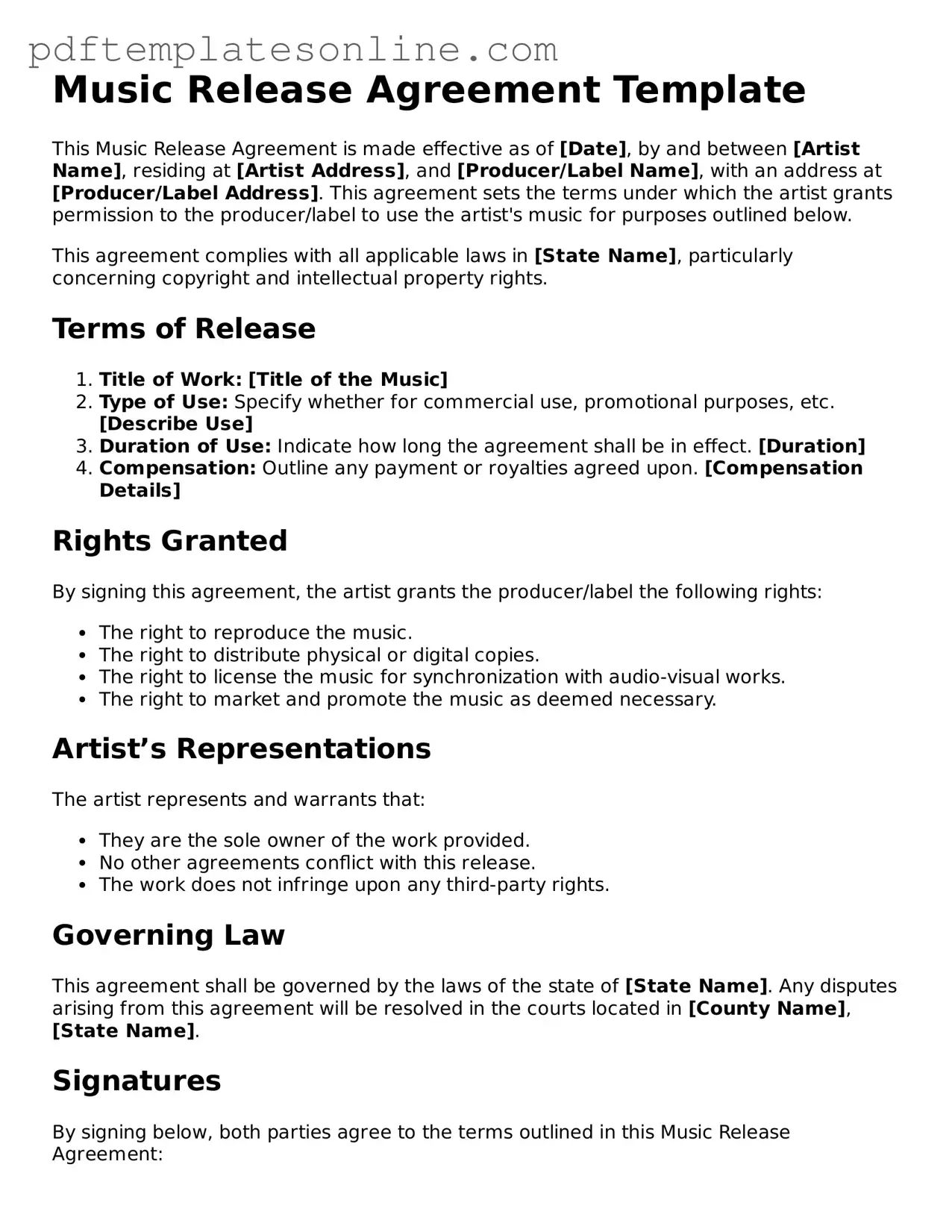Filling out a Music Release form can seem straightforward, but many individuals make common mistakes that can lead to complications down the line. One prevalent error is failing to provide complete contact information. It's essential to include accurate details, such as phone numbers and email addresses, to ensure clear communication throughout the process.
Another frequent mistake is neglecting to read the entire form thoroughly. Each section contains important information that may affect the rights and obligations of all parties involved. Skimming through the document can result in missing critical clauses or misunderstandings about the terms.
Many people also forget to specify the scope of the rights being granted. It is crucial to clarify whether the release applies to a specific project or if it extends to future uses. This oversight can lead to disputes later on, as parties may have different interpretations of the agreement.
Additionally, individuals often overlook the need for signatures. A Music Release form is not legally binding without the appropriate signatures from all parties. Ensure that each person involved has signed and dated the document to validate the agreement.
Some individuals mistakenly assume that verbal agreements are sufficient. Relying on spoken promises can lead to misunderstandings and potential legal issues. Always document agreements in writing to avoid confusion and to provide a clear record of the terms agreed upon.
Another common error is failing to include the date of the agreement. The date serves as a reference point for when the rights were granted and can be important in determining the duration of the release. Omitting this detail may create uncertainty about the timeline of the agreement.
People sometimes neglect to consult with others involved in the project. Collaboration is key in the music industry, and ensuring that all parties are on the same page can prevent conflicts. Engaging with collaborators before finalizing the form can lead to a smoother process.
In some cases, individuals may misinterpret the legal language used in the form. While it's important to avoid jargon, understanding the implications of the terms is vital. Seeking clarification or assistance can help ensure that everyone comprehends their rights and responsibilities.
Another mistake is not keeping a copy of the completed form. After filling out the Music Release form, it is advisable to retain a copy for personal records. This ensures that all parties have access to the same information and can refer back to the agreement if needed.
Lastly, failing to follow up after submitting the form can lead to missed opportunities. After sending in the Music Release form, check in with the other parties to confirm receipt and discuss any next steps. This proactive approach can help maintain good relationships and facilitate future collaborations.
